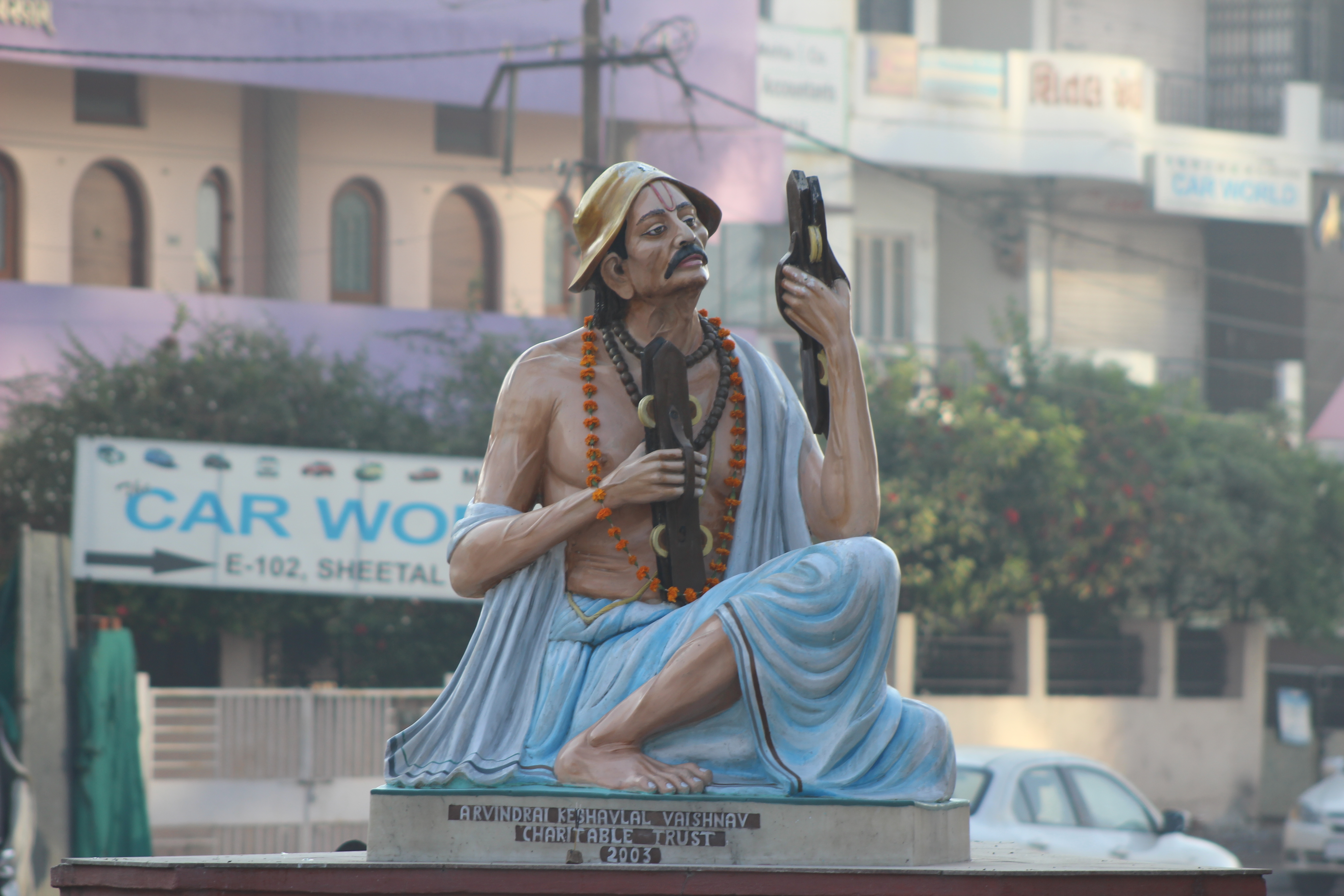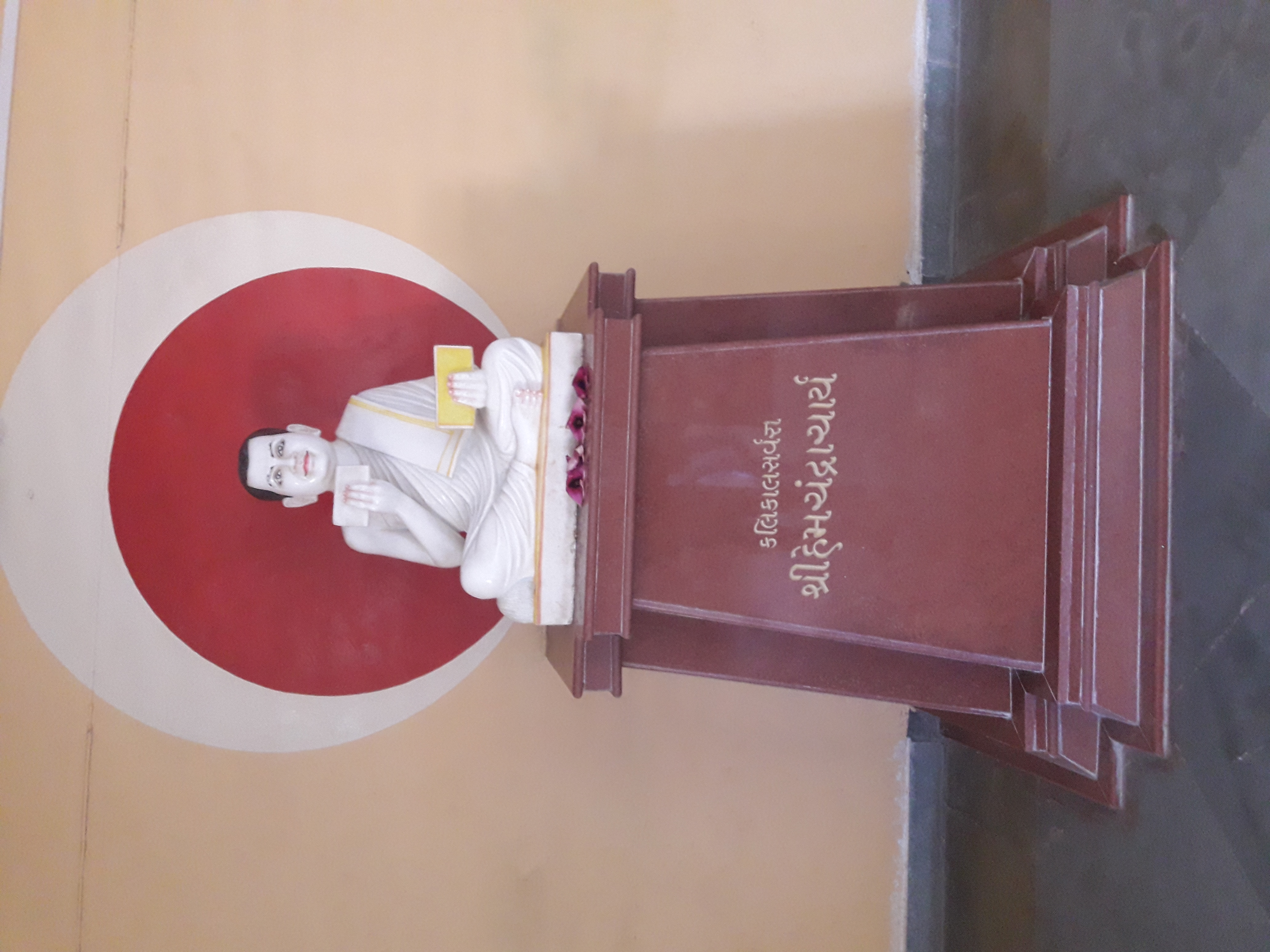|
Culture Of Gujarat
The culture of Gujarat is both ancient, new, and modern. Gujarati engagement ceremony ''In many Gujarati communities, the engagement ceremony is known as 'Gol Dhana', which does not include a ring ceremony''. (in Gujarati script, ગોળ-ધાણા), which literally means "Jaggery and Coriander seeds" and refers to the practice of distributing a small amount of jaggery mixed with coriander seeds. Gujarati Hindu ceremony Marriage is a highly auspicious occasion in Indian culture. According to the Vedas, the Hindu scriptures, marriage is a sacred lifelong commitment between a man and a woman. It is considered to be the strongest of all social bonds and is the initiation into a lifetime of togetherness. The Vedic wedding ceremony consists of prayers, invocations, and vows recited in Sanskrit, the most ancient surviving language. The Vedic wedding ceremony dates back to over five thousand years and is performed under a decorated canopy, the ''mandap''. The four pillars that s ... [...More Info...] [...Related Items...] OR: [Wikipedia] [Google] [Baidu] |
Gujarati Alphabet
The Gujarati script (, transliterated: ) is an abugida for the Gujarati language, Kutchi language, and various other languages. It is a variant of the Devanagari script differentiated by the loss of the characteristic horizontal line running above the letters and by a number of modifications to some characters. Gujarati numerical digits are also different from their Devanagari counterparts. Origin The Gujarati script () was adapted from the Nagari script to write the Gujarati language. The Gujarati language and script developed in three distinct phases — 10th to 15th century, 15th to 17th century and 17th to 19th century. The first phase is marked by use of Prakrit, Apabramsa and its variants such as Paisaci, Shauraseni, Magadhi and Maharashtri. In second phase, Old Gujarati script was in wide use. The earliest known document in the Old Gujarati script is a handwritten manuscript ''Adi Parva'' dating from 1591–92, and the script first appeared in print in a 1797 advertise ... [...More Info...] [...Related Items...] OR: [Wikipedia] [Google] [Baidu] |
Akhyana
Akhyana was a traditional musical theatre as well as medieval genre of Gujarati poetry and Rajasthani poetry. It was primarily practiced in Gujarat and Rajasthan states of India. Etymology and definition ''Akhyana'' literally means ''to tell'' or ''narrate'' in Sanskrit. The 12th century polymath Hemchandra defined Akhyana in his ''Kavyanusashana'' as a side story from religious texts narrated by Granthika (professional storyteller) to instruct audience accompanied by singing and acting. This definition does not include the narration of other non-mythological stories like that of Narsinh Mehta. In general, Akhyana can be defined as the stories narrated by story teller for religious instructions to audience accompanied by singing and acting. Dolarrai Mankad defined it as a form of poetry with musical components and scope of acting. Akhyana Performers The narrator or professional storytellers who recited Akhyanas were called Manabhatt or Gagaria-bhatt. They set poetry to musical tu ... [...More Info...] [...Related Items...] OR: [Wikipedia] [Google] [Baidu] |
Mirabai
Meera, better known as Mirabai and venerated as Sant Meerabai, was a 16th-century Hindu mystic poet and devotee of Krishna. She is a celebrated Bhakti saint, particularly in the North Indian Hindu tradition. Mirabai was born into a Rathore Rajput royal family in Kudki (modern-day Pali district of Rajasthan) and spent her childhood in Merta. She is mentioned in ''Bhaktamal'', confirming that she was widely known and a cherished figure in the Bhakti movement culture by about 1600 CE.Catherine Asher and Cynthia Talbot (2006), India before Europe, Cambridge University Press, , page 109 Most legends about Mirabai mention her fearless disregard for social and family conventions, her devotion to Krishna, her treating Krishna as her husband and being persecuted by her in-laws for her religious devotion. She has been the subject of numerous folk tales and hagiographic legends, which are inconsistent or widely different in details.Nancy Martin-Kershaw (2014), Faces of the Feminine ... [...More Info...] [...Related Items...] OR: [Wikipedia] [Google] [Baidu] |
Narsinh Mehta
Narsinh Mehta, also known as Narsinh Bhagat, was a 15th-century poet-saint of Gujarat, India, honored as the first poet, or ''Adi Kavi,'' of the Gujarati language. Narsinh Mehta is member of Nagar Brahman community. Narsinh became a devotee of Krishna, and dedicated his life to composing poetic works described as ''bhakti,'' or devotion towards Krishna. His ''bhajans'' have remained popular in Gujarat and Rajasthan for over 5 centuries. Most notably, his composition ''Vaishnav Jan To'' was Mahatma Gandhi's favorite and became popular with freedom fighters across India. Biography Much of what is known about Narsinh Mehta is derived from his own compositions and poetic works, due to the lack of formal historical documentation during this period. Additional insights into Narsinh Mehta's biography are found in works from other poets of subsequent eras, as their poems describe in detail the personality of Narsinh Mehta and certain key events from his life. Though there is no cons ... [...More Info...] [...Related Items...] OR: [Wikipedia] [Google] [Baidu] |
Hemachandra
Hemachandra was a 12th century () Indian Jain saint, scholar, poet, mathematician, philosopher, yogi, grammarian, law theorist, historian, lexicographer, rhetorician, logician, and prosodist. Noted as a prodigy by his contemporaries, he gained the title ''kalikālasarvajña'', "the knower of all knowledge in his times" and ''father of Gujarati language''. Born as Changadeva, he was ordained in the Śvētāmbara school of Jainism in 1110 and took the name Somachandra. In 1125 he became an adviser to King Kumarapala and wrote ''Arhanniti'', a work on politics from a Jain perspective. He also produced ''Trishashti-shalaka-purusha-charita'' (“Deeds of the 63 Illustrious Men”), a Sanskrit epic poem on the history of important figures of Jainism. Later in his life, he changed his name to Hemachandra. Early life Hemachandra was born in Dhandhuka, in present-day Gujarat, on Kartika Sud Purnima (the full moon day of Kartika month). His date of birth differs according to source ... [...More Info...] [...Related Items...] OR: [Wikipedia] [Google] [Baidu] |
Gujarati Literature
The history of Gujarati literature ( gu, ગુજરાતી સાહિત્ય) may be traced to 1000 AD, and this literature has flourished since then to the present. It is unique in having almost no patronage from a ruling dynasty, other than its composers. Gujarat Vidhya Sabha, Gujarat Sahitya Sabha, Gujarat Sahitya Akademi and Gujarati Sahitya Parishad are Gujarat-based literary institutions promoting the Gujarati literature. History Such factors as the policies of the rulers, the living style of the people, and the worldwide influence on society are important for any literature to flourish. In Gujarat, due to the development of trade and commerce, the religious influence of Jainism as well as Hinduism, and also due to the safety and encouragement of rulers like Chaulukya (Solanki) and Vaghela Rajputs, literary activities were in full force from the 11th century. * Gujarati literature ** Early literature (up to 1450 AD) *** Prāg-Narsinh Yug (1000 AD to 1450 ... [...More Info...] [...Related Items...] OR: [Wikipedia] [Google] [Baidu] |
Tax Exemption
Tax exemption is the reduction or removal of a liability to make a compulsory payment that would otherwise be imposed by a ruling power upon persons, property, income, or transactions. Tax-exempt status may provide complete relief from taxes, reduced rates, or tax on only a portion of items. Examples include exemption of charitable organizations from property taxes and income taxes, veterans, and certain cross-border or multi-jurisdictional scenarios. Tax exemption generally refers to a statutory exception to a general rule rather than the mere absence of taxation in particular circumstances, otherwise known as an exclusion. Tax exemption also refers to removal from taxation of a particular item rather than a deduction. International duty free shopping may be termed "tax-free shopping". In tax-free shopping, the goods are permanently taken outside the jurisdiction, thus paying taxes is not necessary. Tax-free shopping is also found in ships, airplanes and other vessels travelin ... [...More Info...] [...Related Items...] OR: [Wikipedia] [Google] [Baidu] |
Government Of Gujarat
The Government of Gujarat, also known as Gujarat Government, is the supreme governing authority of the Indian state of Gujarat and its 33 districts. It consists of an executive of the legislators appointed by the Governor of Gujarat, a judiciary and of a publicly elected legislative body. Like other states in India, the head of state of Gujarat is the Governor, appointed by the President of India on the advice of the Central (Union) government. The governor's role is largely ceremonial, but the governor considers the legislative composition and appoints the Chief Minister, who is the main head of government, as chair of the Council of Ministers of Gujarat and is vested, in some instances alone but as to most executive powers by Council consensus with virtually all of the executive powers. Gandhinagar, the capital of Gujarat, houses the relevant Vidhan Sabha (also known as the Gujarat Legislative Assembly) and the secretariat. The Gujarat High Court in Ahmedabad, has jurisdicti ... [...More Info...] [...Related Items...] OR: [Wikipedia] [Google] [Baidu] |
The Financial Express (India)
''The Financial Express'' is an Indian English-language business newspaper owned by The Indian Express Group. It has been published by the Indian Express ''The Indian Express'' is an English-language Indian daily newspaper founded in 1932. It is published in Mumbai by the Indian Express Group. In 1999, eight years after the group's founder Ramnath Goenka's death in 1991, the group was split be ... group since 1961. The ''Financial Express'' specialises in Indian and international business and financial news. Its editor is Shyamal Majumdar. The paper publishes 11 editions from a number of Indian cities. It also gives out two noteworthy awards - FE India's Best Bank Awards and FE-EVI Green Business Leadership Awards. References External links * ''Financial Express'' ePaper(E-Paper – Digital Replica of the newspaper) ''Financial Express Hindi'' website Business newspapers published in India Indian Express Limited Newspapers published in Kolkata English-language ... [...More Info...] [...Related Items...] OR: [Wikipedia] [Google] [Baidu] |
Screen (magazine)
''Screen'' was an Indian weekly film magazine published by Indian Express Limited. Established in 1951, it was owned by The Indian Express Group. The magazine was acquired by Star India in 2015 and subsequently ceased publication. The magazine's content focused on India's Hindi film industry, a.k.a. Bollywood, located mainly in Mumbai. It also had an e-magazine version. History ''Screen'' was first published on 26 September 1951 with Manorama Katju as its managing editor. She was succeeded in 1959 by S.S. Pillai who died in post in 1977. The magazine was founded by The Indian Express Group. B. K. Karanjia who was previously editor of ''Filmfare'', remained the editor of ''Screen'' for 10 years. Udaya Tara Nayar, previously a staff writer for the magazine, was editor between 1988-1996 and 1998–2000. Film journalist, Bhawana Somaaya was the editor of the magazine from 2000 to 2007. In 2007, she was succeeded by Priyanka Sinha Jha, a former '' Society'' magazine and '' ... [...More Info...] [...Related Items...] OR: [Wikipedia] [Google] [Baidu] |
Narsinh Mehta (1932 Film)
''Narsinh Mehta'' ( gu, નરસિંહ મેહતા) is a 1932 Gujarati biographical film directed by Nanubhai Vakil. It was the first Gujarati talkie film. Plot The film is based on the life of the saint-poet Narsinh Mehta. Cast The cast was: * Master Manhar as Narsinh Mehta * Umakant Desai as Krishna * Mohan Lala as Ra Mandlik * Khatun as Kunwarbai * Master Bachu as Kunwarbai's husband * Miss Jamna as Manekbai * Miss Mehtab as Rukmini Marutirao, Trikam Das and Miss Devi appeared in other roles. Production The sets were designed by Ravishankar Raval. Criticism According to Anandshankar Dhruv, the film adhered to a Gandhian The followers of Mahatma Gandhi, the greatest figure of the Indian independence movement, are called Gandhians. Gandhi's legacy includes a wide range of ideas ranging from his dream of ideal India (or ''Rama Rajya)'', economics, environmentalism, ... interpretation of Narsinh Mehta. The film was devoid of miracles associated with him. Referen ... [...More Info...] [...Related Items...] OR: [Wikipedia] [Google] [Baidu] |




